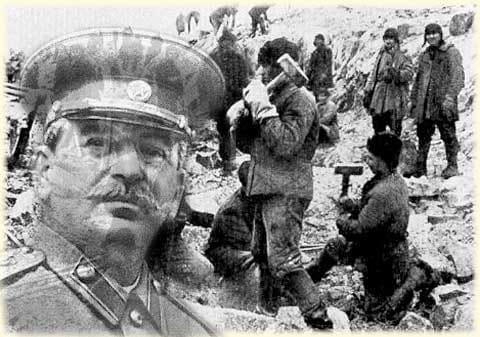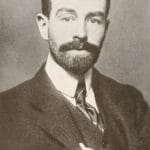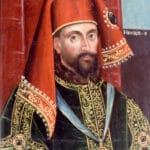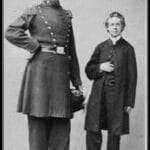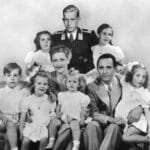The Making of a Dictator: Unraveling Stalin’s Rise to Power
Ever wonder how Joseph Stalin, a man born into poverty in a small Georgian town, rose to become the iron-fisted dictator of the Soviet Union? His story is a chilling tale of cunning strategy, ruthless ambition, and the tragic consequences of unchecked power.
This Quizlet study guide delves into the key events and manipulative tactics that marked Stalin’s path to absolute power, leaving a permanent scar on the Soviet Union and shaping global politics for decades.
From Humble Beginnings to Ruthless Revolutionary
Stalin’s journey to power was anything but straightforward. It was a slow and calculated climb, fueled by a potent mix of ambition, ruthlessness, and a keen understanding of political maneuvering.
Here’s a glimpse into his early years and the making of a revolutionary:
- A Difficult Start: Born Josef Vissarionovich Dzhugashvili in 1878 in Gori, Georgia (then part of the Russian Empire), Stalin’s early life was marked by poverty and a strict, often abusive, father.
- Finding His Cause: Instead of following the path laid out for him at the Tiflis Spiritual Seminary, a young Stalin was drawn to the revolutionary ideas of Karl Marx and, later, Vladimir Lenin. He joined the Bolshevik movement, a radical group seeking to overthrow the Tsarist regime.
- A Life of Risk: To support the Bolsheviks and evade the Tsarist authorities, Stalin engaged in a life of crime, including bank robberies and extortion. These experiences honed his skills in deception, manipulation, and violence.
- Exile and Escape: Stalin’s revolutionary activities didn’t go unnoticed. He faced multiple exiles to Siberia but consistently managed to escape, showcasing his resourcefulness and determination.
- The Birth of “Stalin”: In 1910, he adopted the name “Stalin,” meaning “Man of Steel” in Russian, a strategic branding move that reflected his tough persona and revolutionary ideals.
Seizing the Opportunity: The Revolution and Its Aftermath
The 1917 Russian Revolution, a tumultuous period of upheaval and social unrest, provided the perfect backdrop for Stalin’s rise. While his role in the revolution itself is often debated, it was the ensuing chaos and power vacuum that truly allowed him to shine, albeit in a sinister light.
Here’s how Stalin capitalized on the revolution’s aftermath:
- From the Shadows to the Spotlight: While figures like Lenin and Trotsky played more prominent roles in the revolution, Stalin steadily climbed the ranks of the Bolshevik Party. He served as a political commissar during the Russian Civil War, ensuring the loyalty of Red Army troops and demonstrating his ruthlessness in suppressing dissent.
- A Crucial Appointment: In 1922, Stalin was appointed to the seemingly mundane position of General Secretary of the Communist Party. This role, often overlooked, granted him control over party membership, appointments, and the flow of information – tools he would expertly wield on his quest for power.
- Lenin’s Declining Health and Mistrust: As Lenin’s health deteriorated, his concerns about Stalin’s growing ambition and authoritarian tendencies grew. In his “Testament,” a document meant to be released after his death, Lenin warned against Stalin’s hunger for power and recommended his removal as General Secretary.
The Master Strategist: Outmaneuvering Rivals and Consolidating Power
With Lenin’s death in 1924, the race to fill the leadership void was on. Stalin, having carefully laid the groundwork, was in a prime position to seize control. He proved to be a master strategist, exploiting rivalries, manipulating perceptions, and eliminating opposition with calculated precision.
Here’s how Stalin outmaneuvered his opponents and solidified his grip on power:
- Suppression and Propaganda: Stalin successfully suppressed Lenin’s Testament, preventing its potentially damaging contents from reaching the public. He launched a propaganda campaign portraying himself as Lenin’s rightful heir, capitalizing on the reverence for the deceased leader to bolster his image.
- The Troika and the Sidelining of Trotsky: Stalin initially formed a ruling “troika” with Lev Kamenev and Grigory Zinoviev, using their combined influence to isolate his main rival, Leon Trotsky. Trotsky, a hero of the revolution and a brilliant orator, underestimated Stalin’s cunning and was ultimately outmaneuvered and forced into exile.
- Eliminating the Opposition: Throughout the 1920s and 1930s, Stalin systematically purged any potential threats to his power. This included former allies like Kamenev and Zinoviev, who were accused of treason and executed in show trials orchestrated to instill fear and obedience.
- The Great Terror: From 1936 to 1938, Stalin unleashed a period of mass terror known as the Great Purge. Millions of people, including party members, intellectuals, artists, and ordinary citizens, were arrested, executed, or sent to labor camps (the Gulags) based on flimsy accusations and fabricated evidence. The purges were designed to eliminate any form of dissent and solidify Stalin’s absolute control over the Soviet Union.
The Legacy of a Dictator: A Complex and Chilling Tale
By the time of his death in 1953, Stalin had fundamentally reshaped the Soviet Union. He transformed a backward, largely agrarian nation into an industrial and military superpower, albeit one built on a foundation of fear, repression, and unimaginable human suffering.
Here’s a glimpse into the complexities of Stalin’s legacy:
- Economic Transformation: Stalin’s Five-Year Plans led to rapid industrialization and collectivized agriculture, albeit at a tremendous human cost. Millions died as a result of forced collectivization, famine, and persecution.
- Social and Cultural Impact: Stalin’s policies led to increased literacy rates, improved healthcare, and greater opportunities for women in the workforce. However, these advancements came at the expense of individual liberties, artistic freedom, and freedom of speech.
- A Climate of Fear: Stalin’s reign of terror left an indelible mark on Soviet society. The purges instilled a deep sense of fear and paranoia, creating a culture of silence and obedience that would linger long after his death.
- Global Impact: Stalin’s leadership during World War II, while instrumental in defeating Nazi Germany, also contributed to the rise of the Cold War and the division of Europe.
Conclusion
Stalin’s rise to power is a chilling reminder that revolution and ideology can be twisted to serve the ambitions of a ruthless few. His story serves as a cautionary tale about the seductive nature of power and the devastating consequences of unchecked ambition. While his legacy remains a subject of debate, his impact on the Soviet Union, and indeed the world, is undeniable.
